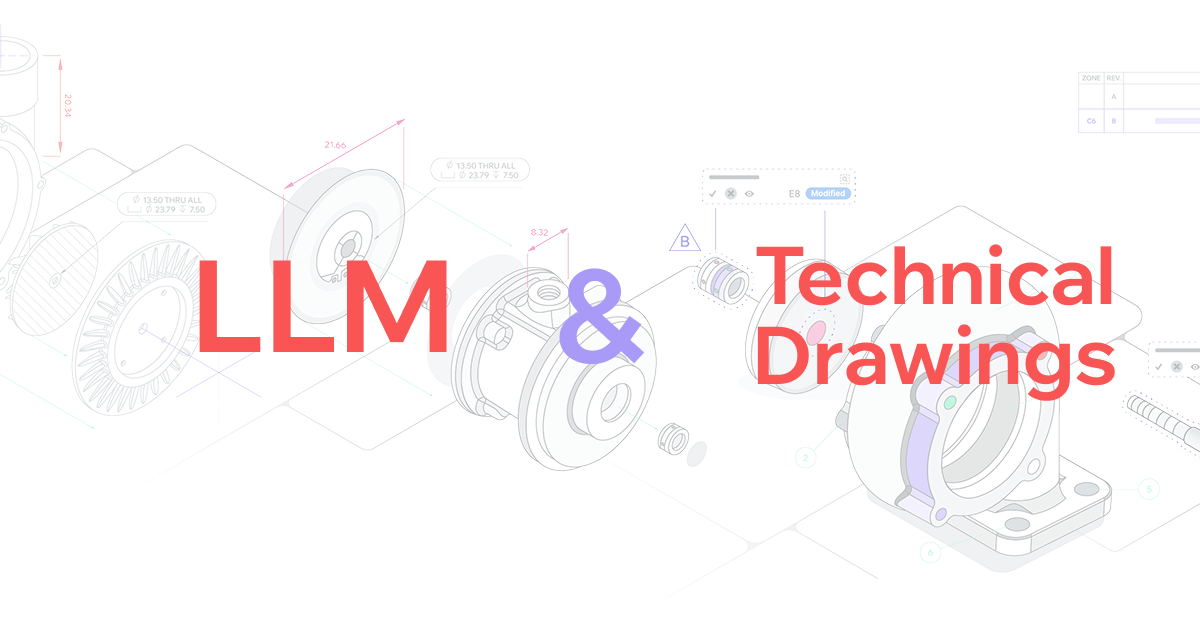When it comes to managing product development, engineers and managers often face the same debate: PDM or PLM?
On one side, Product Data Management (PDM) systems are great for handling CAD files, revisions, and version control. On the other, Product Lifecycle Management (PLM) tools expand the scope to manage processes across the entire organization.
In this article, we’ll break down what PDM is, what PLM is, and why the choice between the two isn’t always straightforward. And before you decide which one is “better,” we’ll show you how AI can supercharge both. Whether you’re a small R&D team working in SolidWorks PDM or a global manufacturer running a full PLM suite, AI can make your workflows smarter, faster, and less error prone.
What is PDM?
Product Data Management (PDM) is all about organizing and controlling your engineering data - drawings, CAD files, BOMs, and revisions. It’s the system that ensures no one is working on the wrong file and that changes are captured, stored, and shared properly. Think of PDM as the secure library for all your product design data, built to streamline collaboration within engineering teams.
Key strengths of PDM:
- Centralized Data Storage
- Version & Revision Control
- Access Control & Security
- Workflow Automation
- Integration with CAD & ERP
PDM keeps the engineering world organized and efficient.
What is PLM?
Product Lifecycle Management (PLM) takes things a step further. While PDM focuses on design files and engineering data, PLM manages the entire lifecycle of a product - from concept, design, and manufacturing to service and disposal. PLM brings cross functional teams (engineering, manufacturing, supply chain, quality, marketing, procurement) into a single system.
Key strengths of PLM:
- Cross department collaboration
- Compliance and regulatory workflows
- Full product lifecycle visibility
- Stronger change management and traceability
PLM is the enterprise-wide backbone for managing not just data, but processes, responsibilities, and decision making across the company.
PDM vs. PLM - The Usual Debate
For years, companies have debated: Should we stick with PDM or move to PLM? PDM is lighter, faster to implement, and perfectly suited for design teams. PLM is more powerful but heavier, slower, and often harder for teams to adopt.
Before deciding whether Product Data Management (PDM) or Product Lifecycle Management (PLM) is right for your team, it’s important to take a step back and look at your organization’s structure, goals, and challenges.
Here are five questions that may help your decision-making process:
1. What problem are we really trying to solve – data management or process management?
If the main challenge is controlling CAD files, versions, and design standards, a PDM system may be sufficient.
If the goal is to manage cross-departmental processes and product information across the entire lifecycle, PLM might be the better fit.
2. Which teams need to access and share the same product information?
Is it primarily the engineering team, or do manufacturing, quality, procurement, and marketing also need visibility?
This question helps clarify whether you need an engineering-focused system or an enterprise-wide platform.
3. How critical is traceability throughout the product lifecycle?
In regulated industries where every change, approval, and revision must be documented, PLM provides the traceability and audit control that PDM alone may not offer.
4. What level of complexity and integration do our operations require?
If your workflows connect to ERP, quality systems, or supply chain tools, PLM typically offers deeper integration options.
If your focus is mainly on CAD and design collaboration, PDM might be simpler and faster to deploy.
5. How mature are our internal processes and organizational structure?
Companies with well-defined procedures and clear governance usually benefit from PLM.
Smaller or fast-moving teams may prefer to start with a lighter, more flexible PDM solution that can scale over time.
An Important Note
These five questions are a good starting point - but they’re not the whole story.
Every organization has unique requirements, constraints, and workflows. The best solution depends on your team’s size, industry, regulatory needs, and long-term strategy, and the specific aspects of your product development process.
Where AI for Mechanical Engineering Changes the Game
In addition to the desicion process, you may also want to ask yourself How can AI enhance whichever system you use?
- In PDM, AI can:
- Check trends across CAD files version history that is synced to your AI platform.
- Enforce company standards with rule-based checks, combined with PDM automation to automatically embed specific data into drawings and models.
- Generate BOM diffs and inspection reports instantly, while the system automatically identifies equivalent parts for your existing shelf components.
- Check trends across CAD files version history that is synced to your AI platform.
- In PLM, AI can:
- Streamline change management with auto-generated reports.
- Look for quotes, suppliers and parts to purchase in one click.
- Improve traceability with an AI-driven audit trail.
- Simplify collaboration by turning technical diffs into clear, visual feedback for non-engineers.
- Streamline change management with auto-generated reports.
With bananaz AI solution, you can making both PDM and PLM smarter. Our solution works inside your existing workflows to reduce manual effort, prevent errors, and accelerate engineering processes.



.png)

